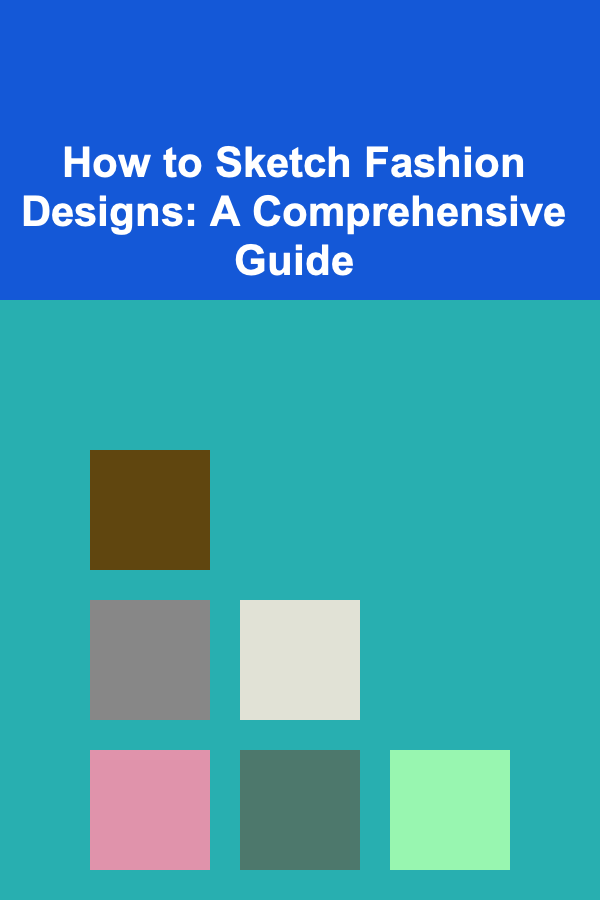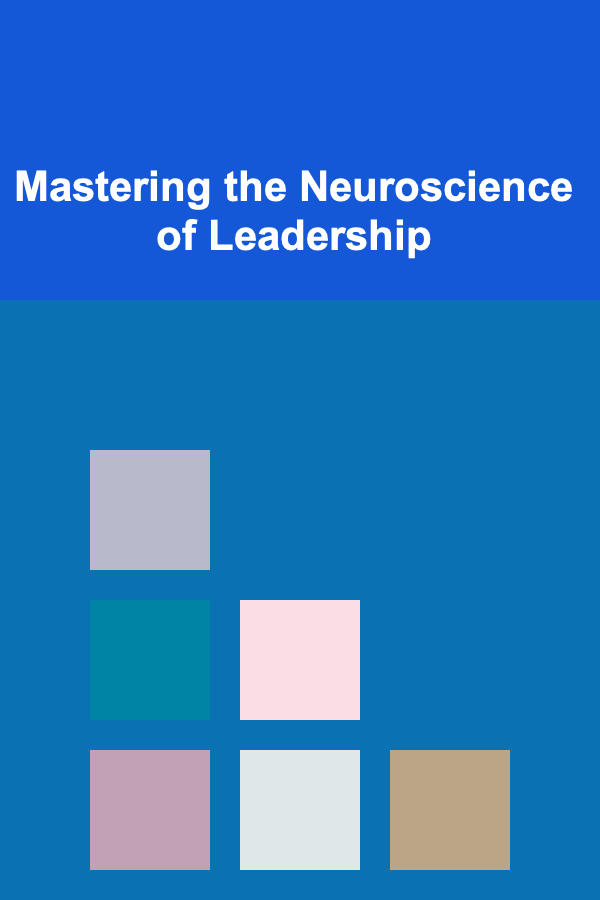
How to Sketch Fashion Designs: A Comprehensive Guide
ebook include PDF & Audio bundle (Micro Guide)
$12.99$6.99
Limited Time Offer! Order within the next:

Fashion design sketching is a crucial skill for any aspiring fashion designer. It allows you to visualize your ideas, experiment with different silhouettes, fabrics, and details, and communicate your vision to others. This guide provides a comprehensive overview of the process, from basic anatomy to advanced rendering techniques.
I. Understanding the Fundamentals
Before diving into the technical aspects of sketching, it's essential to grasp the foundational principles that underpin successful fashion illustrations.
A. Anatomy for Fashion Illustration: The Croquis
The croquis is the cornerstone of fashion sketching. It's a quick, stylized sketch of the human figure, used as a base for draping garments. Unlike realistic anatomical drawings, the fashion croquis is elongated and exaggerated to showcase clothing more effectively. Think of it as a stylized mannequin, not a portrait.
Key differences between a realistic figure and a fashion croquis:
- Proportions: The fashion croquis typically has a longer torso and legs than a realistic figure. The standard is often considered to be 9-10 head lengths compared to the realistic 7-8.
- Pose: Croquis are often posed dynamically to suggest movement and highlight the flow of fabric.
- Simplification: Muscles and anatomical details are minimized to keep the focus on the clothing.
Creating Your First Croquis: A Step-by-Step Guide
- Start with a Central Line: Draw a vertical line down the center of your paper. This represents the spine and provides balance.
- Mark Head Lengths: Divide the line into 9 or 10 equal segments, each representing one head length. These marks will guide your proportions.
- Outline the Body: Using light, flowing lines, sketch the basic shapes of the head, torso, and limbs. Pay attention to the natural curves of the body. Think of simplified geometric forms (ovals, cylinders) to represent body parts.
- Define the Pose: Introduce a slight curve in the spine and tilt the shoulders and hips to create a dynamic pose. A slight twist of the torso can add a lot of visual interest.
- Add Details (Sparsely): Lightly sketch in the basic shapes of the hands, feet, and facial features. Remember to keep it simple and stylized. Avoid overly detailed facial features; the clothing is the star.
- Refine the Lines: Once you're happy with the overall shape, go over the lines you want to emphasize with a slightly darker pencil.
- Erase Guidelines: Erase any unnecessary guidelines or construction lines.
Practice Tip: Don't be discouraged if your first few croquis aren't perfect. Practice is key! Try sketching a croquis every day, even if it's just for a few minutes. You can find reference images online or use photographs of models.
B. Understanding Fabric and Drape
Fabric is the language of fashion. To sketch clothing effectively, you need to understand how different fabrics behave and how they drape on the body. Key factors influencing fabric drape include:
- Weight: Heavy fabrics like wool tend to hang straight down with minimal folds, while lightweight fabrics like silk drape more fluidly and create more folds.
- Texture: Rough textures create more pronounced shadows and highlights, while smooth textures reflect light more evenly.
- Stretch: Stretchy fabrics conform closely to the body and create fewer folds than non-stretch fabrics.
- Weave/Knit: The construction of the fabric impacts how it behaves. A tightly woven fabric will have a different drape than a loose knit.
Sketching Fabric Folds:
Fabric folds are created where the fabric changes direction or is supported by the body. Here are some common types of folds and how to sketch them:
- Pipe Folds: Long, vertical folds that occur when fabric is supported at the top and hangs down. Sketch these as elongated, slightly curved lines.
- Zigzag Folds: Sharp, angular folds that occur when fabric is pulled taut in one direction. Sketch these as a series of connected "V" shapes.
- Half-Lock Folds: Small, rounded folds that occur when fabric is gathered or bunched up. Sketch these as overlapping curves.
- Spiral Folds: Folds that spiral around a point, often occurring at stress points like elbows or knees. Sketch these as concentric curves.
- Drape Folds: Large, flowing folds that occur in loose-fitting garments. Sketch these as soft, organic curves that follow the contour of the body.
Key Principles for Sketching Fabric Drape:
- Observe Real Fabric: The best way to learn about fabric drape is to observe real fabric. Drape different types of fabric over a mannequin or a chair and sketch the way it falls.
- Use Light and Shadow: Shading is crucial for creating a sense of volume and depth in your sketches. Pay attention to where the light hits the fabric and create shadows in the folds and creases.
- Simplify and Stylize: You don't need to draw every single fold. Focus on the key folds that define the shape and texture of the fabric. Stylization is perfectly acceptable in fashion illustration.
C. Basic Garment Construction
Understanding the basics of garment construction will greatly improve the accuracy and realism of your sketches. Knowing how a garment is put together will help you visualize how it will drape and fit on the body.
Key elements of garment construction to consider:
- Seams: Where two pieces of fabric are joined together. Seams affect the shape and fit of a garment.
- Darts: Triangular or diamond-shaped pieces of fabric that are removed to create shape and fit. Darts are often found at the bust, waist, and hips.
- Pleats: Folds of fabric that are pressed or stitched in place to add volume or decoration.
- Gathers: Fabric that is drawn together to create fullness. Gathers are often used at the waistline, sleeves, or neckline.
- Facings: Pieces of fabric that are used to finish the edges of a garment, such as the neckline, armholes, or button placket.
- Closures: Zippers, buttons, snaps, and other devices that are used to fasten a garment.
Sketching Tips for Garment Construction Details:
- Visualize the 3D Form: Imagine how the garment is constructed in three dimensions. This will help you draw the details more accurately.
- Use Precise Lines: Use sharp, clean lines to represent seams, darts, and other construction details.
- Pay Attention to Scale: Make sure the details are in proportion to the rest of the garment.
II. The Sketching Process: Step-by-Step
Now that you understand the fundamentals, let's break down the sketching process into manageable steps.
A. Inspiration and Concept Development
Every great design starts with an idea. Before you even pick up a pencil, take time to gather inspiration and develop your concept. Sources of inspiration can include:
- Nature: Colors, patterns, and textures found in the natural world.
- Art and Architecture: Styles, forms, and compositions from different periods and cultures.
- Fashion History: Trends and styles from the past.
- Current Events: Social and cultural trends.
- Personal Experiences: Your own memories, emotions, and observations.
Developing Your Concept:
- Define Your Target Audience: Who are you designing for? Consider their age, lifestyle, and fashion preferences.
- Choose a Theme: What is the overall message or feeling you want to convey with your designs?
- Create a Mood Board: Gather images, fabrics, and other materials that reflect your concept. This will help you visualize your ideas and stay focused.
- Brainstorm Ideas: Sketch out quick thumbnails of different silhouettes, details, and fabrics. Don't be afraid to experiment and try new things.
B. Rough Sketches and Silhouettes
Once you have a clear concept, start sketching out your ideas in more detail. Focus on the overall silhouette and proportions of the garment. These sketches should be loose and exploratory.
Key Tips for Rough Sketches:
- Use Light Lines: Sketch lightly so you can easily erase and make changes.
- Focus on the Big Picture: Don't get bogged down in details at this stage. Focus on the overall shape and flow of the garment.
- Experiment with Different Silhouettes: Try different shapes and proportions to see what works best. A-line, empire waist, sheath, etc.
- Sketch Multiple Options: Don't just settle on the first idea that comes to mind. Sketch out several different options to explore the possibilities.
C. Refining the Sketch: Adding Details and Proportions
After you've established the basic silhouette, it's time to refine your sketch and add details. This is where you'll define the neckline, sleeves, hemline, and any other design elements.
Key Tips for Refining Your Sketch:
- Use a Croquis as a Guide: Draw your garment over a croquis to ensure accurate proportions and fit.
- Pay Attention to Fabric Drape: Consider how the fabric will fall and fold on the body.
- Add Construction Details: Sketch in seams, darts, pleats, and other construction details.
- Refine the Lines: Darken the lines you want to emphasize and erase any unnecessary lines.
- Check Proportions: Make sure all the elements of the garment are in proportion to each other and to the body.
D. Adding Color and Texture
Adding color and texture to your sketch brings it to life and helps to communicate your design vision more effectively. There are several different techniques you can use to add color and texture, including:
- Colored Pencils: Good for creating subtle shading and blending.
- Markers: Good for creating bold, vibrant colors. Copic markers are a popular choice for fashion illustration.
- Watercolors: Good for creating soft, flowing effects.
- Digital Painting: Using software like Adobe Photoshop or Procreate to add color and texture.
Tips for Adding Color and Texture:
- Choose a Color Palette: Select a color palette that reflects the mood and theme of your design. Consider using a color wheel for inspiration.
- Use Shading to Create Depth: Use darker shades to create shadows and lighter shades to create highlights.
- Experiment with Different Textures: Use different techniques to represent different fabric textures, such as fur, leather, or silk. Hatching, stippling, and cross-hatching can all be used to create texture.
- Use Highlights to Add Shine: Use white or light-colored highlights to add shine to smooth fabrics.
- Don't Overdo It: Sometimes less is more. Avoid adding too much color or texture, which can make your sketch look cluttered.
E. Rendering Techniques: Advanced Shading and Highlights
Rendering is the process of adding realistic shading and highlights to your sketch to create a sense of volume and depth. Advanced rendering techniques can take your sketches to the next level and make them look more professional.
Key Rendering Techniques:
- Chiaroscuro: A technique that uses strong contrasts between light and shadow to create a dramatic effect.
- Hatching and Cross-Hatching: Using parallel lines (hatching) or intersecting lines (cross-hatching) to create shading.
- Stippling: Using dots to create shading. The closer the dots are together, the darker the shading.
- Blending: Using a blending stump or your finger to smooth out the shading and create a more gradual transition between light and dark.
- Highlighting: Adding white or light-colored highlights to areas that are directly illuminated by the light source.
Tips for Advanced Rendering:
- Establish a Light Source: Decide where the light is coming from and use consistent shading to create a realistic effect.
- Use Multiple Layers of Shading: Build up the shading gradually by adding multiple layers of different tones.
- Pay Attention to Fabric Texture: Use different rendering techniques to represent different fabric textures. For example, use short, choppy strokes to represent the texture of wool, and smooth, flowing strokes to represent the texture of silk.
- Use Highlights Sparingly: Don't overdo the highlights, as this can make your sketch look artificial.
- Practice Regularly: Rendering is a skill that takes time and practice to develop. Keep experimenting with different techniques and styles to find what works best for you.
III. Tools and Materials
Having the right tools and materials can make a big difference in the quality of your sketches. Here's a list of essential supplies:
- Pencils: A range of graphite pencils, from 2H (hard) to 6B (soft), for sketching and shading. A mechanical pencil with a fine lead (0.5mm or 0.7mm) is also useful for precise details.
- Eraser: A kneaded eraser for lifting graphite and a white plastic eraser for removing lines completely.
- Sketchbook: A sketchbook with smooth, acid-free paper. Look for a paper weight of at least 70lb to prevent bleed-through if you plan to use markers.
- Ruler: A ruler for drawing straight lines and measuring proportions.
- French Curve: A French curve is useful for drawing smooth, flowing curves.
- Tracing Paper: Tracing paper is useful for transferring sketches and experimenting with different ideas.
- Colored Pencils, Markers, or Watercolors: Choose your preferred medium for adding color and texture.
- Blending Stump: A blending stump is a tool used to smooth out shading and create a more gradual transition between light and dark.
- Mannequin or Dress Form: A miniature mannequin or dress form can be helpful for visualizing how garments will drape on the body.
IV. Digital Fashion Sketching
Digital fashion sketching has become increasingly popular in recent years, thanks to the availability of powerful and affordable software and hardware. Digital sketching offers several advantages over traditional sketching, including:
- Flexibility: Easy to make changes and experiment with different ideas.
- Efficiency: Faster workflow and easier to share and collaborate with others.
- Versatility: Access to a wide range of tools and effects.
- No Material Costs: Eliminates the need to constantly purchase paper, pencils, and other traditional materials.
Popular Digital Sketching Software:
- Adobe Photoshop: A powerful image editing software that can be used for a wide range of tasks, including fashion illustration.
- Adobe Illustrator: A vector graphics editor that is ideal for creating clean, precise illustrations.
- Procreate: A popular iPad app that is specifically designed for digital painting and illustration.
- Clip Studio Paint: Another powerful digital painting and illustration software that is popular among artists.
Essential Digital Sketching Tools:
- Tablet with Stylus: A graphics tablet with a stylus allows you to draw directly on your computer screen. Wacom is a leading brand in graphics tablets. An iPad Pro with Apple Pencil is also a popular option.
- Digital Sketching Software: Choose a software program that suits your needs and budget.
Tips for Digital Fashion Sketching:
- Learn the Software: Take the time to learn the ins and outs of your chosen software program. Many online tutorials and courses are available.
- Use Layers: Use layers to separate different elements of your sketch, such as the croquis, the garment, and the shading. This will make it easier to make changes and adjustments.
- Experiment with Different Brushes and Effects: Explore the different brushes and effects available in your software program to find the ones that work best for you.
- Practice Regularly: Like any skill, digital sketching takes time and practice to develop. Don't be afraid to experiment and try new things.
V. Practice and Development
The most important thing to remember is that fashion sketching is a skill that takes time and practice to develop. Don't be discouraged if your first sketches aren't perfect. The key is to keep practicing and experimenting, and to learn from your mistakes.
Tips for Improving Your Fashion Sketching Skills:
- Sketch Every Day: Even if it's just for a few minutes, make time to sketch every day. The more you practice, the better you'll become.
- Observe Real Clothing: Pay attention to how different fabrics drape and fold on the body. Study clothing in magazines, online, and in stores.
- Study the Work of Other Fashion Illustrators: Look at the work of professional fashion illustrators and analyze their techniques. Identify what you like about their style and try to incorporate it into your own work.
- Take Classes or Workshops: Consider taking a fashion sketching class or workshop to learn new techniques and get feedback from an instructor.
- Join a Fashion Design Community: Connect with other fashion designers and share your work. Get feedback from your peers and learn from their experiences.
- Don't Be Afraid to Experiment: Try different techniques, styles, and mediums. Don't be afraid to break the rules and find your own unique voice.
- Be Patient and Persistent: Fashion sketching takes time and effort to master. Don't give up if you don't see results immediately. Keep practicing and you will eventually reach your goals.
By following these tips and practicing regularly, you can develop your fashion sketching skills and create beautiful and compelling illustrations that bring your design visions to life. Good luck!

How To Avoid Distractions When Working Remotely
Read More
How to Choose the Right Area Rugs for Home Staging
Read More
How to Keep Track of Digital Signatures and Authorizations
Read More
How To Paint a Room Like a Professional
Read More
Mastering the Neuroscience of Leadership
Read More
How to Shop Smart for Healthy Groceries
Read MoreOther Products

How To Avoid Distractions When Working Remotely
Read More
How to Choose the Right Area Rugs for Home Staging
Read More
How to Keep Track of Digital Signatures and Authorizations
Read More
How To Paint a Room Like a Professional
Read More
Mastering the Neuroscience of Leadership
Read More